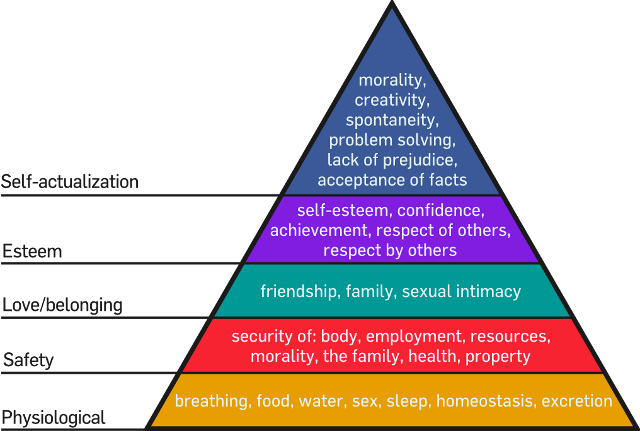Maslow's Hierarchy of Needs #
Definition #
Maslow's Hierarchy of Needs is a structure that describes human desires and motivations in terms of tiers of fulfillment.

(Image: Wikipedia)
Commentary #
The basic premise behind Maslow's hierarchy is that people's needs are organized in such a way that when lower needs (e.g., sleep) are unfulfilled, it is impossible to focus on higher needs (e.g., self-esteem). Recently, a friend questioned the nature of this hierarchy citing examples of religious people who clearly appear to be fulfilled at the highest level (self-actualization), yet lacked many of the securities provided by the lower levels (e.g., food, employment, health).
Alderfer proposed a revised version known as ERG Theory in which needs are also grouped into Existence, Relatedness, and Growth categories. However, neither of these theories explains how people could work on higher levels while lower levels remain unfulfilled.
Conjecture #
A possible explanation might be the inverse of the "regression" theory that Alderfer proposed. He suggested that when a higher need was unfulfilled, lower needs received more attention. I propose that if a higher need is over-fulfilled, lower needs can be (temporarily) ignored.
Meta #
Is it useful to organize human needs in this way? I'm aware of some applications in education and business, are there any others? Do you know of alternatives?
Updates #
2009-11-23 #
- A friend suggested that perhaps only people who have had lower levels satisfied in the past are able to refocus efforts into higher levels when those lower levels are subsequently unfulfilled because they at least experienced those levels.